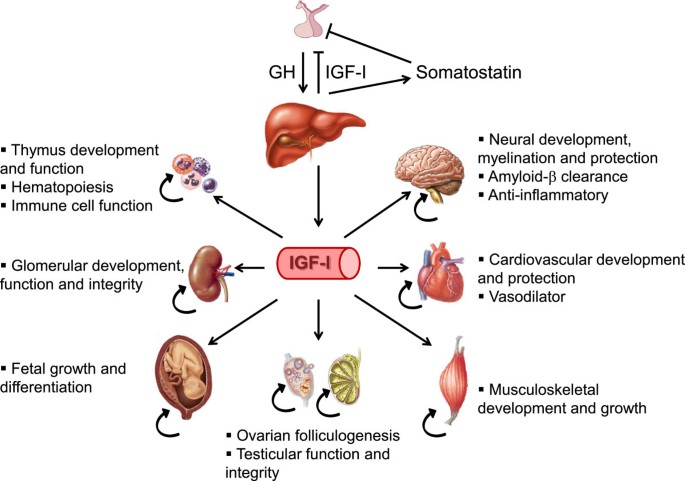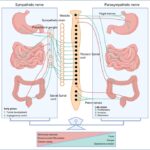Primary Insulin-Like Growth Factor-1 Deficiency (PIGFD), also known as Laron syndrome or growth hormone insensitivity syndrome, is a rare congenital disorder characterized by the body’s inability to produce or respond to insulin-like growth factor-1 (IGF-1), despite normal or elevated levels of growth hormone (GH). IGF-1 plays a pivotal role in childhood growth and development, and its deficiency results in significantly impaired linear growth.

The Role of IGF-1 in Growth and Development
IGF-1 is a peptide hormone primarily produced in the liver in response to growth hormone stimulation. It mediates the anabolic and growth-promoting effects of GH on bones, muscles, and organs.
IGF-1 Functions Include:
- Stimulating bone elongation and density
- Promoting muscle mass development
- Enhancing glucose metabolism
- Supporting neuronal development
In PIGFD, the disrupted GH-IGF-1 axis results in stunted physical growth, particularly evident in early childhood.
Genetic and Molecular Basis of PIGFD
PIGFD is often caused by mutations in the GH receptor (GHR) gene, leading to GH resistance. This impairs downstream signaling required for IGF-1 synthesis.
Inheritance Pattern
- Autosomal recessive inheritance
- Both parents typically carry one mutated copy of the gene
Common Genetic Variants
- Mutations affecting GH receptor structure
- Defects in post-receptor signaling pathways
- Alterations in IGF-1 gene expression or bioavailability
Clinical Presentation of Primary IGF-1 Deficiency
Growth-Related Features
- Severe short stature evident in early childhood
- Delayed bone age and skeletal maturation
- Proportionate dwarfism with normal head circumference
Additional Signs
- Underdeveloped facial features (e.g., prominent forehead, small nasal bridge)
- Hypoglycemia, especially in infancy
- Possible microgenitalia in males
- Normal cognitive development in most cases
Distinguishing from Other Causes of Short Stature
- Normal or high serum GH levels
- Low circulating IGF-1 levels
- Lack of response to exogenous GH therapy
Diagnostic Criteria and Evaluation
Accurate diagnosis requires a combination of clinical assessment, laboratory testing, and genetic analysis.
Diagnostic Workup:
- Growth hormone stimulation tests (e.g., clonidine or arginine)
- Serum IGF-1 and IGFBP-3 levels
- GH receptor gene sequencing
- Radiological studies to assess bone age
Current Therapeutic Strategies for PIGFD
IGF-1 Replacement Therapy
The only FDA-approved treatment is recombinant human IGF-1 (mecasermin). It directly supplements the deficient hormone, promoting growth in children with PIGFD.
Mecasermin Benefits:
- Increases height velocity in pediatric patients
- Improves lean body mass and bone mineralization
- Reduces risk of hypoglycemic episodes when administered with food
Dosage and Administration:
- Subcutaneous injection twice daily
- Requires close monitoring for hypoglycemia, lymphoid tissue overgrowth, and intracranial hypertension
Supportive Interventions:
- Nutritional optimization
- Routine glucose monitoring in early treatment
- Psychosocial support for patients and families
Prognosis and Long-Term Outlook
With early diagnosis and consistent IGF-1 therapy, many children experience improved growth outcomes and metabolic stability. While final adult height often remains below average, timely treatment can greatly enhance physical development, self-esteem, and quality of life.
Regular follow-up with endocrinologists is essential to manage:
- Growth monitoring
- Treatment side effects
- Developmental milestones
Research and Future Perspectives
Emerging therapeutic research focuses on:
- IGF-1 analogs with longer half-life
- Gene therapy targeting GH receptor mutations
- Combined GH and IGF-1 regimens to modulate other growth pathways
Increased awareness, newborn screening, and molecular diagnostics are improving early detection rates and patient outcomes worldwide.
Primary Insulin-Like Growth Factor-1 Deficiency is a rare but treatable disorder. A multidisciplinary approach involving endocrinologists, geneticists, and pediatricians ensures optimal care. With advanced IGF-1 replacement therapy, affected individuals can achieve better growth potential and lead productive lives.

